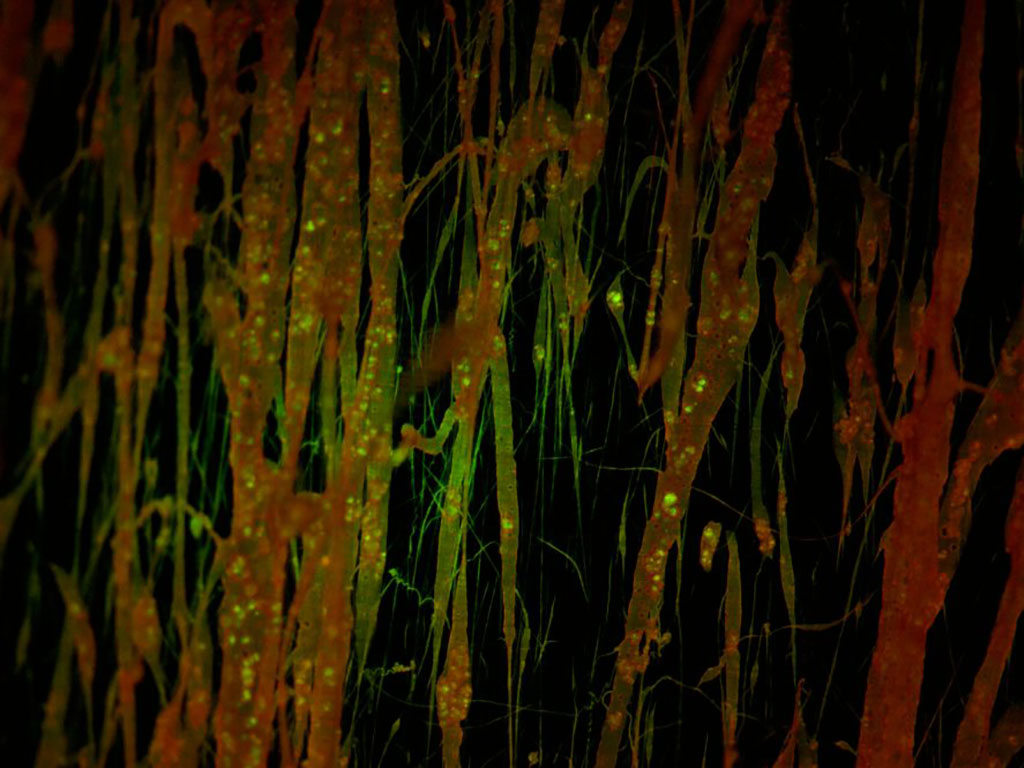Biodegradable Ultrasound Could Make Brain Cancers More Treatable
Posted on 15 Jun 2023
When a person is found to have a malignant brain tumor, the usual treatment is surgical removal followed by chemotherapy to eradicate any remaining cancer cells. However, brain cancers are notoriously resistant to chemotherapy, due to the blood-brain barrier, which is a protective membrane preventing large potentially harmful molecules from entering the brain. This same barrier also blocks beneficial chemo-drugs and other treatments from attacking brain cancer cells and treating other brain diseases. A safe and effective method of breaching the blood-brain barrier involves using ultrasound to vibrate cells sufficiently to create pores that allow the medication to pass through.
However, directing ultrasound through the thick human skull is challenging. Usually, numerous powerful ultrasound devices must be strategically positioned around the skull and accurately focused on the tumor's location with an MRI machine right after administering chemotherapy in a hospital setting. The procedure lasts about five to six hours and the intense ultrasound can damage tissues. The procedure is rarely conducted more than once, despite most patients with aggressive brain cancers undergoing chemotherapy for months. Utilizing ultrasound at each chemotherapy session would be significantly more effective. However, due to the complex nature of the MRI-ultrasound process, this is rarely done. Now, a revolutionary, biodegradable ultrasound, considerably more powerful than earlier models, could improve the treatment of brain cancers.

A device implanted directly in the brain can be used repeatedly to allow chemotherapy to permeate the brain and eliminate tumor cells. An implantable ultrasound device already exists in the market, but it's made of potentially toxic ceramic materials that require surgical removal post-treatment. Researchers at University of Connecticut (Storrs, CT, USA) had earlier built a safe, biodegradable piezoelectric ultrasound brain implant, although it wasn't as powerful as the traditional ceramic variants. In their latest research, the team employed a completely new method to create a biodegradable polymer ultrasound that is as powerful as ceramic models.
Initially, the researchers intended to use glycine crystals, an amino acid that's a common protein in the body and known for its strong piezoelectric properties. Glycine is safe and biodegradable, but it dissolves too quickly in water. Additionally, glycine piezoelectric crystals are brittle and shatter easily, which makes processing this material into a practical ultrasound device highly challenging. The researchers devised a unique solution: they grew glycine crystals, shattered them intentionally into pieces just a few hundred nanometers in size, and then spun them with polycaprolactone (PCL), a biodegradable polymer, to produce piezoelectric films composed of glycine and PCL nanofibers. These films can generate ultrasound at 334 kilo-Pascals under small voltage (~ 0.15 Vrms), similar to a ceramic ultrasound brain implant. They then coated the glycine-PCL film in other biodegradable polymers for protection. Poly-L-Lactide (PLLA), one potential coating, decomposes approximately in six weeks.
The researchers tested the device on mice with brain cancer, treating them with PTX (paclitaxel), a potent chemotherapy drug effective against brain cancer but difficult to pass through the blood-brain barrier. The glycine-PCL ultrasound successfully enabled PTX to cross the blood-brain barrier, reducing the tumors and doubling the lifespan of mice with brain cancer compared to those untreated. The combined treatment of glycine-PCL ultrasound and PTX was much more effective than using PTX alone, or PTX and ultrasound from the original, less powerful version of the biodegradable ultrasound device, based on PLLA. The team also conducted a six-month safety evaluation of the device implanted in the brain and found no negative impact on the health of the mice. The researchers now plan to test the safety and efficacy of the device in large animals.
Related Links:
University of Connecticut








 Guided Devices.jpg)





